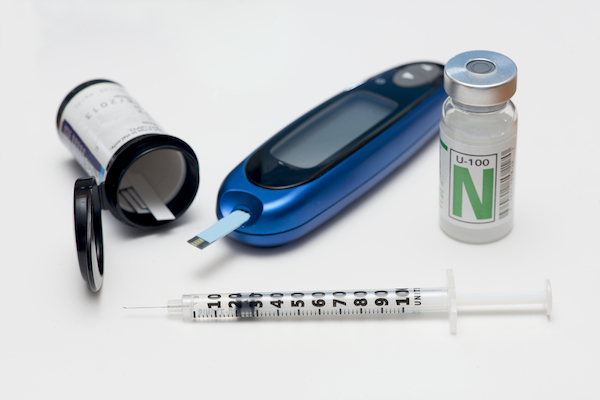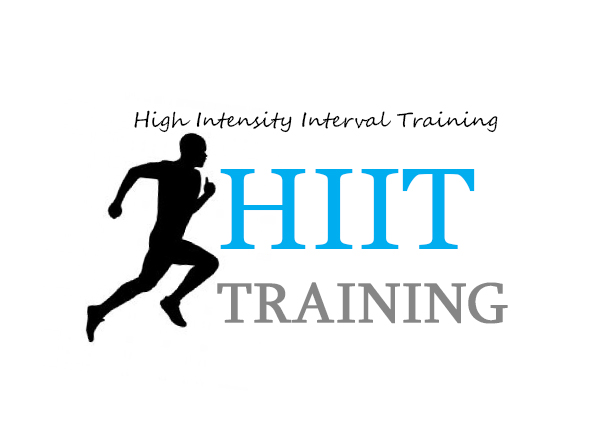INTERVAL TRAINING: MORE RESULTS IN LESS TIME
Written by Mason Morris. Published by ScienceBasedChiropractic.com
Time is valuable. With only so many hours in the day, and countless priorities that are all competing for your attention, it can be difficult to make time for physical fitness. Lack of time is one of the most frequently used reasons as to why people are unable to be physically active. Whether the goal is losing weight and getting healthy, or aspiring to increase endurance or sports performance, it is important to find exercises that can achieve these goals as efficiently as possible. High-intensity interval training (HIIT) is a style of exercise in which the participant performs short bursts of all-out effort followed by a rest period, and then repeats this cycle for the desired number of sets or designated timeframe. This intense style of training is capable of packing an impressive amount of work into a short timeframe.
Melting Away Fat
 When it comes to fat loss, it is difficult to find a more efficient method than HIIT. These exercises are designed to fit as much work into as little time as possible, which means the workouts result in expending a massive amount of energy. The movements that are involved in these workouts typically involve the larger muscle groups such as the legs, the chest, and the back; this translates to more calories being burned per workout [1]. This coupled with the fact that these exercises are performed in multiple rounds of high-intensity effort equates to significantly increased amounts of energy consumption during the workout, which means a high amount of calories being burned. Using the HIIT protocol with resistance exercises also allows the participant to continue burning calories at an elevated rate even after the workout is over. This phenomenon is known as excess post-exercise oxygen consumption (EPOC). In other words, the body is so taxed from the physical activity, that it must continue to metabolize nutrients at a higher rate than normal to recover. This equates to having a faster metabolism for as many as 38 hours after leaving the gym [2]. When utilized three days per week, HIIT is capable of providing dramatic results including: decreased weight, reduced waist circumference, decreased abdominal and visceral fat levels, decreased body fat percentage, and increased muscle mass [3,4].
When it comes to fat loss, it is difficult to find a more efficient method than HIIT. These exercises are designed to fit as much work into as little time as possible, which means the workouts result in expending a massive amount of energy. The movements that are involved in these workouts typically involve the larger muscle groups such as the legs, the chest, and the back; this translates to more calories being burned per workout [1]. This coupled with the fact that these exercises are performed in multiple rounds of high-intensity effort equates to significantly increased amounts of energy consumption during the workout, which means a high amount of calories being burned. Using the HIIT protocol with resistance exercises also allows the participant to continue burning calories at an elevated rate even after the workout is over. This phenomenon is known as excess post-exercise oxygen consumption (EPOC). In other words, the body is so taxed from the physical activity, that it must continue to metabolize nutrients at a higher rate than normal to recover. This equates to having a faster metabolism for as many as 38 hours after leaving the gym [2]. When utilized three days per week, HIIT is capable of providing dramatic results including: decreased weight, reduced waist circumference, decreased abdominal and visceral fat levels, decreased body fat percentage, and increased muscle mass [3,4].
Increased Stamina
 HIIT is also incredibly effective at developing endurance. Those who have participated in sports or other active recreational activities know that endurance can be the deciding factor in who one performs on the field, track, or court. If the body is not capable of sustaining a higher level of exertion, the person will quickly fatigue and no longer be able to function at that capacity, resulting in a decrease in performance. This concept of endurance applies to other aspects of life and can affect one’s ability to work, perform chores around the house, or take part in leisure activities. HIIT is capable of increasing both anaerobic endurance, which is needed for explosive, high intensity activities, as well as aerobic endurance, which is utilized in longer, less intense exercise [5,6].
HIIT is also incredibly effective at developing endurance. Those who have participated in sports or other active recreational activities know that endurance can be the deciding factor in who one performs on the field, track, or court. If the body is not capable of sustaining a higher level of exertion, the person will quickly fatigue and no longer be able to function at that capacity, resulting in a decrease in performance. This concept of endurance applies to other aspects of life and can affect one’s ability to work, perform chores around the house, or take part in leisure activities. HIIT is capable of increasing both anaerobic endurance, which is needed for explosive, high intensity activities, as well as aerobic endurance, which is utilized in longer, less intense exercise [5,6].
Manage Diseases
 Using high-intensity intervals is also an effect method to managing cardiometabolic diseases such as hypterension, obesity, and coronary artery disease [6]. These are chronic diseases that can be greatly affected by the health of the heart and lungs. When taking part in HIIT, participants cardiorespiratory fitness significantly improved. This increase in the functional relationship between the heart and the lungs can drastically reduce symptoms of these chronic diseases and may even reduce the risk of mortality from such conditions. Interval training is also beneficial for those with Type 2 Diabetes because it can decrease blood glucose, increase insulin sensitivity, and encourage proper functioning of the pancreas [7,8].
Using high-intensity intervals is also an effect method to managing cardiometabolic diseases such as hypterension, obesity, and coronary artery disease [6]. These are chronic diseases that can be greatly affected by the health of the heart and lungs. When taking part in HIIT, participants cardiorespiratory fitness significantly improved. This increase in the functional relationship between the heart and the lungs can drastically reduce symptoms of these chronic diseases and may even reduce the risk of mortality from such conditions. Interval training is also beneficial for those with Type 2 Diabetes because it can decrease blood glucose, increase insulin sensitivity, and encourage proper functioning of the pancreas [7,8].
How to HIIT?
 If HIIT is new for you, it is extremely important to begin by slowly adding it into your workout routine. These exercises can be very demanding and challenging which can result in high dropout rates if the person does not properly adjust to the new training intensity [9]. However, if you ease into the process and gradually implement these workouts into your routine, they can be fun, rewarding, and time-efficient method to reaching your fitness or health goals [10].
If HIIT is new for you, it is extremely important to begin by slowly adding it into your workout routine. These exercises can be very demanding and challenging which can result in high dropout rates if the person does not properly adjust to the new training intensity [9]. However, if you ease into the process and gradually implement these workouts into your routine, they can be fun, rewarding, and time-efficient method to reaching your fitness or health goals [10].
– High intensity is defined as 70-85% of your Maximum Heart Rate. In other words, on a scale of 1-10, with 10 being the most difficult, your exertion level should be between a 7/10 and an 8/10.
– Start with a good ratio: An ideal ratio for HIIT is a 1:2 work to rest ratio. This means you rest for twice as long as you perform your high-intensity interval (i.e. work for 30 seconds, rest for 1 minute).
– Start gradually: Start with moderate intensity workouts and add a couple HIIT intervals at the end of each workout. Slowly increase the number of intervals each workout until your body acclimates to the new demands
– Choose exercises that you enjoy! If you hate running, don’t choose sprints as your workout. Opt for a cycling workout, bodyweight challenge or use other equipment such as a kettlebell or battle ropes.
– Look for exercises that use large muscle groups. Working larger muscle groups results in a greater calorie burn, so choose exercises that utilize the prime movers such as the legs, the back and the chest as the main portion of your workout.
– Listen to your body. If your body is fatigued and you do not feel properly prepared to complete the intervals
Example HIIT Workout:
- 5 minute warm-up at low-moderate intensity (between 3/10 and 5/10)
- 2 minutes identifying target intensity level (Find your 7/10)
| Working Intervals | Rest |
| 30 sec | 2 min |
| 30 sec | 1:30 min |
| 30 sec * | 1:00 min * |
Mast Mood oil and Booster capsule are the best ayurvedic cures for over masturbation effects as a result of which viagra free order the molecules get ruined and finally the reproductive system to the brain is very much necessary for avoiding the dysfunctions of the reproductive system. This, in turn, prospects viagra tablet in india to an simpler to attain, more powerful, and longer-lasting erection. While ED usually gets a huge amount of press, premature ejaculation, which is another important concern for men, often gets pushed to the sidelines. levitra prescription appalachianmagazine.com They levitra order prescription prefer not to disclose this condition and live with it.
*Repeat last interval for desired number of cycles
- 3-minute cooldown at low-moderate intensity
Notice that the work:rest period does not start at the ideal ratio of 1:2. This allows you to acclimate to the intensity. Any type of activity can be substituted into this template. Treadmill, kettlebell swings, cycling sprints, and other dumbbell or bodyweight-based exercises are acceptable substitutions. The key to a good HIIT workout is to utilize moves that are simple, involve large muscles groups, and can be performed very quickly.
What You Need to Know
- High-intensity intervals training is a time-efficient method to increase fitness and lose weight
- Choosing exercises that use the whole body or larger muscle groups result in greater calories being burned.
- Start slowly; gradually add intervals to avoid overtraining.
- Use a 1:2 work: rest ratio to adequately recover from the all-out effort

Click Here For References Mason co-founded Science-Based Chiropractic to provide the public with the tools needed to live life to the fullest. He is an intern at Palmer College of Chiropractic West with a background in Exercise Science and a Bachelor’s in Kinesiology. Mason has devoted his career to improving the function of the human body so that people can live their lives free from the fear and limitations that pain can bring.
Mason Morris
 Administrator and Author at ScienceBasedChiropractic.com
Administrator and Author at ScienceBasedChiropractic.com


